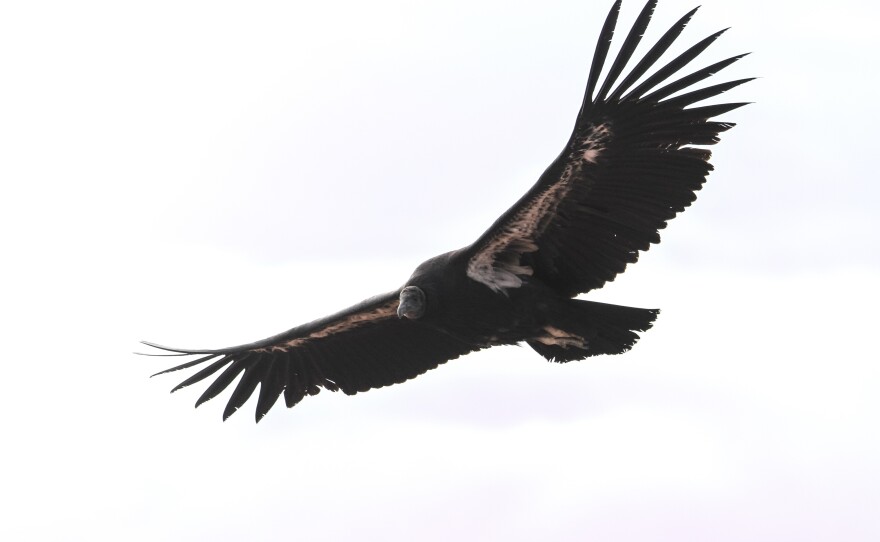In a Wednesday press release, program biologists from The Peregrine Fund and Zion National Park announced Utah’s first wild-hatched California condor since the reintroduction of the bird to California and Arizona has died.
Chris Parish, Condor Program Director for The Peregrine Fund, which manages the wild Arizona-Utah flock, said investigators were able to determine the status of the fledgling by observing parental visits to the cave it inhabited.
“The parents laid the egg in the cave, and the chick developed on through until the point in time when it ventured out to the nest opening where we could see it and get visual confirmation. It was making regular trips out throughout the day and then all of the sudden we noticed the chick wasn’t coming out anymore, but the parents were still visiting. Then the parents quit tending the nest cave and that’s what gave us the indication the chick had failed and probably died,” he said.
The parents of the fledgling were part of an Arizona population reintroduced in 1996. Since then, a total of 25 chicks have been hatched in the wild.
Northern Arizona and southern Utah now harbor 73 wild condors, and despite the loss of southern Utah’s first hatchling, Parish remains hopeful that condors, which produce one egg every other year, will continue to reproduce in the region.
“It’s not one hundred percent guaranteed when condors have chicks in the wild, just like any other large raptor. We’ve stated that as much as 60 percent of animals that fledge in the wild don’t make it, so it’s not terribly unusual. On the optimistic side, we’re hopeful that pair will continue and breed again this year, which they wouldn’t had the chick survived, as they would have been tending to it. The process keeps moving, and that’s how nature attends to these little sidesteps,” he said.
He added southern Utah is a critical part of the recovery effort.
“The fact that condors are in southern Utah, that they’ve gone there on their own and found suitable nesting habitats and found suitable foraging habitat is really a very necessary part of the recovery program, to see the birds disperse from where they were released in northern Arizona and to see them making a living in southern Utah is a really positive sign,” he said.
According to biologists, two northern Arizona condors hatched at the same time as the failed Utah fledgling have taken flight and appear to be thriving.



